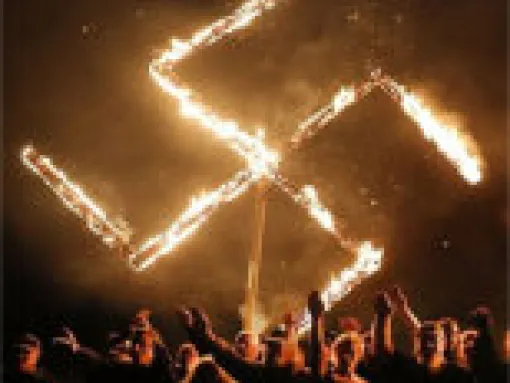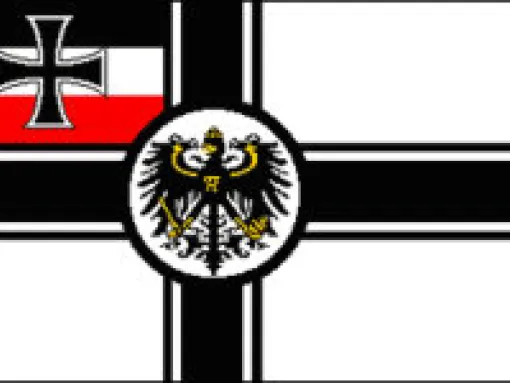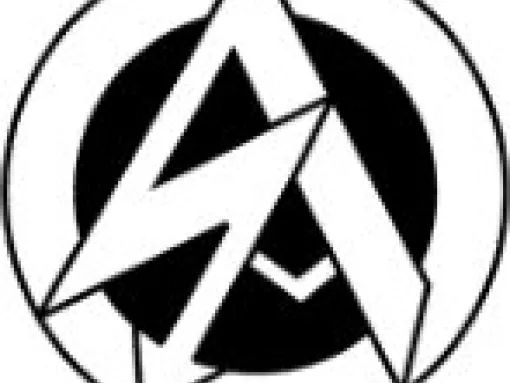
26 Results

88 is a white supremacist numerical code for Heil Hitler. Read more about the meaning behind the numbers, as well as how it’s used in non-extremist forms.

"Blut und Ehre" is a German phrase that translates into "Blood and Honor;" it was popularized by the Nazi Party (as a Hitler Youth slogan and elsewhere). Since World War II, this German phrase (and even more so for its English translation) has commonly been used by white supremacists in Europe, the United States, and elsewhere - most notably as the name of an international racist skinhead group. Additional Images:

Neo-Nazis have adopted the Ku Klux Klan practice of symbolic burnings, substituting swastikas, othala and life runes, triskeles and the Celtic cross for the traditional cross burned by Klan members.

ALTERNATE NAMES: DirlewangerThe crossed grenade emblem signifies the Waffen SS unit most commonly known, after its commander, as the "Dirlewanger Brigade" (later, the 36th SS Division). Oskar Dirlewanger (1895-1945) was an SS officer involved in the Holocaust and anti-partisan actions in World War II, including the murderous suppression of the 1944 uprising of the Polish Home Army in Warsaw. Even within the Waffen SS, both Dirlewanger and his unit had a reputation for sadism,…
ALTERNATE NAMES: Dirlewanger
Read more about Crossed Grenades

It is common for white supremacists in the United States and elsewhere to use German words or phrases, or to create German-like equivalents of English words and phrases. This is most common among neo-Nazis and racist skinheads, but can be seen to some degree across all white supremacist movements. Some of the terms derive from the the Third Reich, while others are more modern in origin. Common examples include phrases such as "Weiss Macht" or "Weisser Macht" (White Power), "Weiss Junge" or …

ALTERNATE NAMES: Nazi SaluteThe Nazi or Hitler salute debuted in Nazi Germany in the 1930s as a way to pay homage to Adolf Hitler. It consists of raising an outstretched right arm with the palm down. In Nazi Germany, it was often accompanied by chanting or shouting "Heil Hitler" or "Sieg Heil." Since World War II, neo-Nazis and other white supremacists have continued to use the salute, making it the most common white supremacist hand sign in the world. Additional Images:
ALTERNATE NAMES: Nazi Salute
Read more about Hitler Salute (hand sign)

ALTERNATE NAMES: Imperial War Ensign, ReichskriegsflaggeBecause Germany has banned use of the swastika and other Nazi imagery, some German neo-Nazis use an older flag, taken from Imperial Germany, as a substitute for the Nazi flag. The imperial flag never originally had any racist or anti-Semitic meaning. Although most common in Germany, this usage of the imperial flag can also be found elsewhere in Europe and in the United States. Additional Images:
ALTERNATE NAMES: Imperial War Ensign, Reichskriegsflagge
Read more about Imperial German Flag

ALTERNATE NAMES: Elhaz Rune, Algis RuneNazi Germany appropriated many pre-Roman European symbols, such as runic symbols, in an attempt to glorify an idealized "Aryan/Norse" heritage. One of these was the so-called "life rune" (from the German Lebensrune), also known as the Elhaz or Algis rune. Elhaz means "elk" and in early Europe this symbol had meanings related to stags or hunting, as well as honor, nobility, or protection. The Nazis used the symbol in various contexts, including the SS's…
ALTERNATE NAMES: Elhaz Rune, Algis Rune
Read more about Life Rune

ALTERNATE NAMES: My Honor Is Loyalty, My Honor is Called Loyalty, Unser Ehre Heisst Treue"Meine Ehre Heisst Treue" is a German phrase that translates roughly to "My Honor Is Loyalty." In Nazi Germany, the Waffen SS (the military wing of the SS) used this phrase as a motto; it is a reference to the organization's loyalty to Adolf Hitler. Since World War II, neo-Nazis and other white supremacists around the world use this German phrase (or its equivalent in English or other languages) as a hate…
ALTERNATE NAMES: My Honor Is Loyalty, My Honor is Called Loyalty, Unser Ehre Heisst Treue
Read more about Meine Ehre Heisst Treue

ALTERNATE NAMES: Nazi War EagleThe Nazi Eagle is a symbol developed originally by the Nazi Party in Germany in the 1920s (also becoming a symbol of the German government after the Nazis took power), based loosely on traditional German coats of arms. Following World War II, the symbol was appropriated by neo-Nazis and other white supremacists worldwide, with many variations. The symbol originally featured an eagle clutching a swastika, but many variations replace the swastika with some other…
ALTERNATE NAMES: Nazi War Eagle
Read more about Nazi Eagle

ALTERNATE NAMES: Nazi FlagThe flag of Nazi Germany has become one of the most potent hate symbols worldwide. It consists of a black swastika in a white circle over a red background (the colors are the same as the Imperial German flag). Originally developed as the flag of the Nazi Party in 1920, it also became the flag of Germany itself after the Nazis took power in 1933. Various elements of the Nazi government and Nazi Party developed many variations and forms of the basic Nazi flag.
Since…
ALTERNATE NAMES: Nazi Flag
Read more about Nazi Party Flag

ALTERNATE NAMES: Othal Rune, Othila Rune, Odal Rune, Norse RuneThe othala rune is part of the runic alphabet system, a system of writing used (with many variations) across pre-Roman Europe. In the 20th century, Nazis in Germany adopted the othal rune, among many other similar symbols, as part of their attempt to reconstruct a mythic "Aryan" past. Nazi uses of the symbol included the divisional insignia of two Waffen SS divisions during World War II. Following World War II, white supremacists…
ALTERNATE NAMES: Othal Rune, Othila Rune, Odal Rune, Norse Rune
Read more about Othala Rune

"Sieg Heil" is a German phrase that translates to "Hail Victory." The Nazi Party in Germany adopted the phrase, which became one of its most widely used and notorious slogans (often used to accompany the Nazi salute). As a result, after World War II, white supremacists in Europe, North America, and elsewhere adopted the phrase as well. Additional Images:

Skrewdriver, long defunct, is the British white power music band that essentially created white power music as a genre. The band, and its deceased leader, Ian Stuart Donaldson, remain held in the highest esteem by white supremacists.

ALTERNATE NAMES: Sunwheel, Black SunThe sonnenrad or sunwheel is one of a number of ancient European symbols appropriated by the Nazis in their attempt to invent an idealized "Aryan/Norse" heritage. The sonnenrad appears in the traditional symbology of many countries and cultures, including Old Norse and Celtic cultures. It has countless variations; the swastika and similar rounded variants are actually sonnenrad forms, as are certain versions of the Celtic Cross. In Nazi Germany, the Nazi…
ALTERNATE NAMES: Sunwheel, Black Sun
Read more about Sonnenrad

White supremacy and the SS Bolts. Find out the history of the neo-Nazi SS Bolts, and the current usage of one of the most powerful hate symbols in history.
ALTERNATE NAMES: Cracker Bolts, SS Lightning Bolts, Lightning Bolts
Read more about SS Bolts

During World War II, Nazi Germany fielded nearly 40 divisions of the so-called Waffen (or armed) SS, creating a private army for SS leader Heinrich Himmler. These divisions fought on every front of the war in Europe, often committing war crimes and atrocities. After the war, the Nuremburg Tribunal declared the SS a criminal organization. However, neo-Nazis and other white supremacists glorified the Waffen SS and eventually began to use the various divisional insignia of these…

In the 2000s, white supremacists created a handsign intended to memorialize the Schutzstaffeln or SS of Nazi Germany, Hitler's secret police, political army, and concentration camp guards. The handsign utilizes both hands to make a lightning bolt symbol, as a pair of lightning bolts was the main symbol of the SS. Additional Images:

The Sturmabteilung (or SA) symbol is the emblem of Hitler's brownshirted stormtroopers (Sturmabteilung or "storm units" in German). The Sturmabteilung were paramilitary formations used by Hitler to intimidate political opponents and Jews before and after his rise to power in Germany. It declined after 1934 when its leaders were murdered at Hitler's orders and was largely supplanted by the SS. After World War II, some neo-Nazis, especially in Europe, turned to the…

The swastika is an ancient symbol used in many cultures that was adopted by Adolf Hitler and turned into a symbol of hatred. Since then, the swastika has become perhaps the most notorious hate symbol in Western culture.









